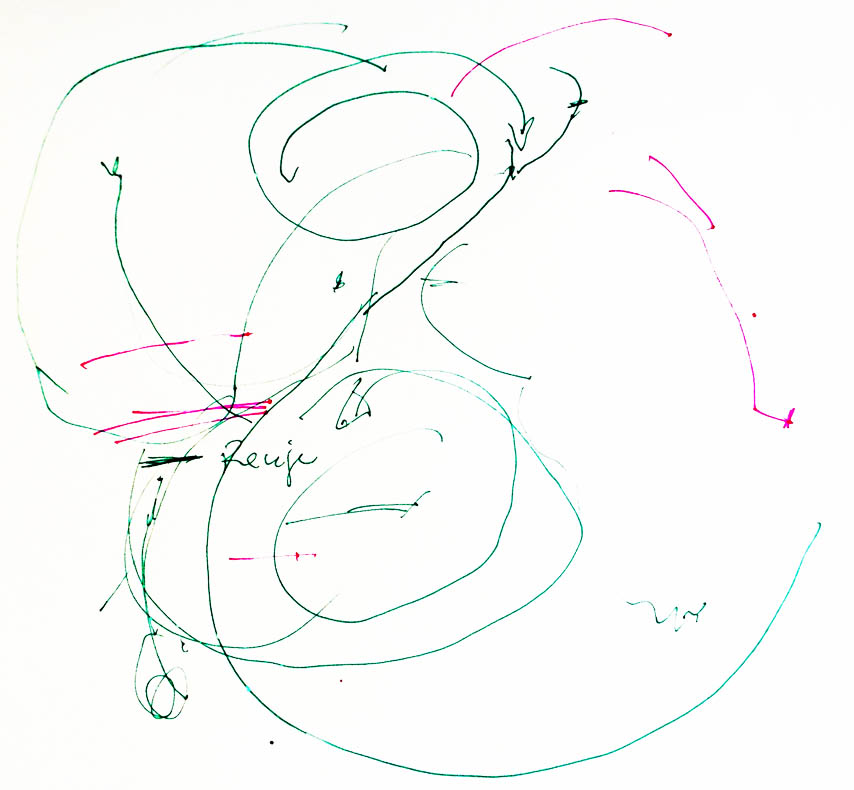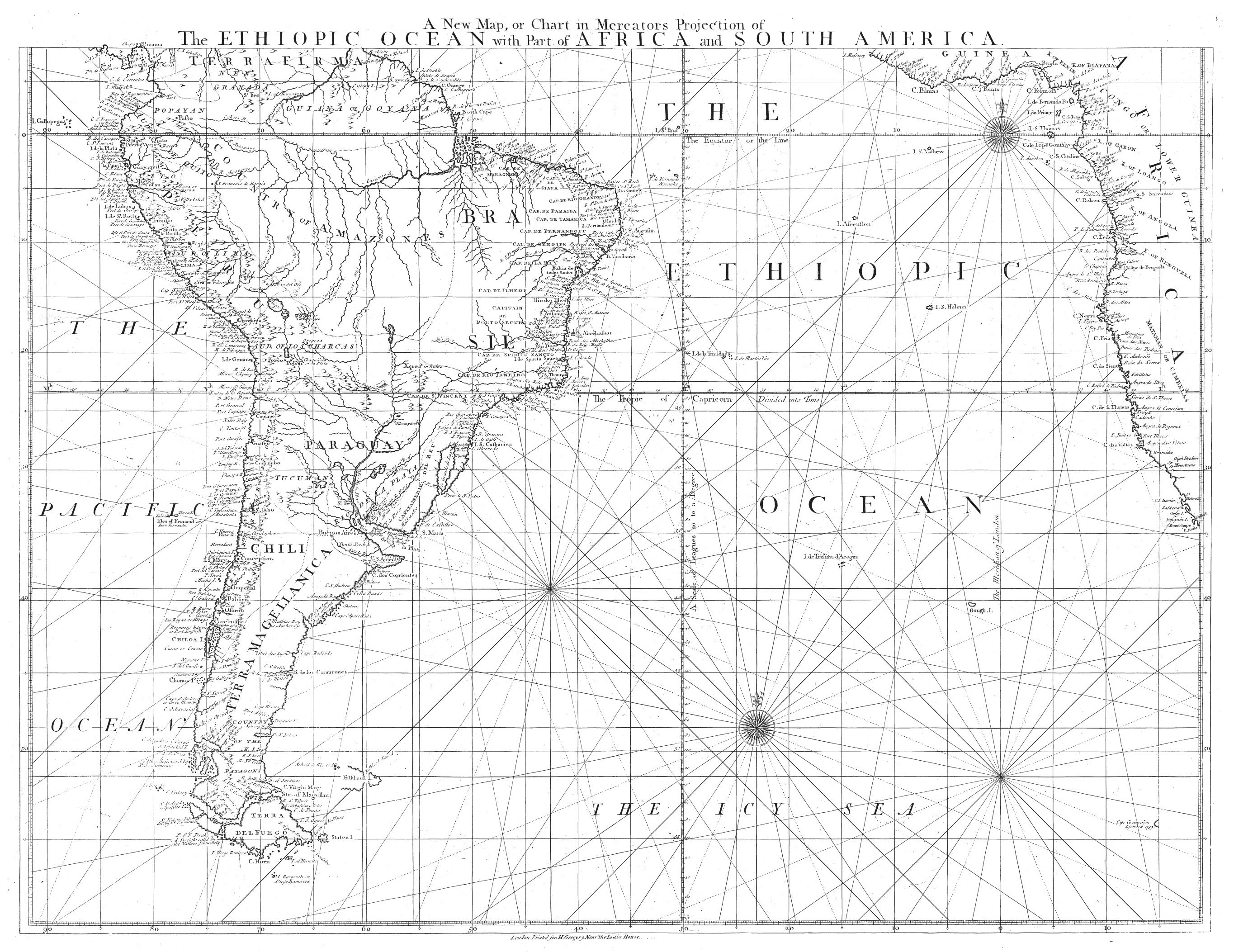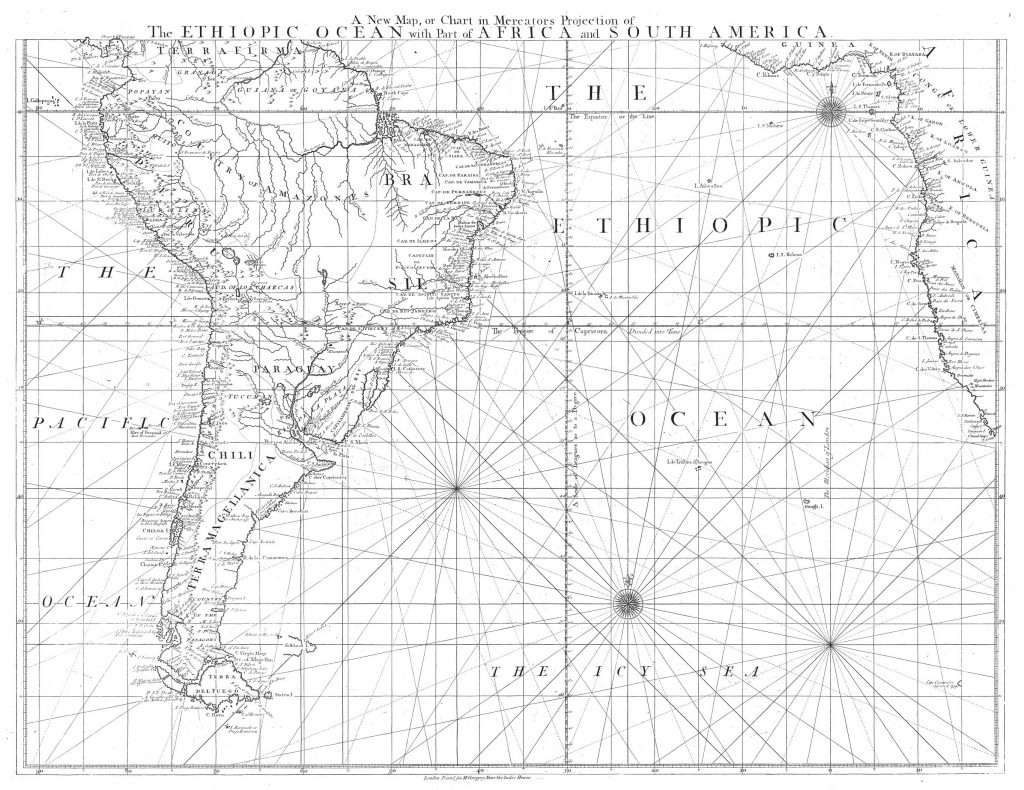by Marília Arantes Moreira, Research Student, Institute of Latin American Studies
I recently met up with Brazilian historian Luiz Felipe de Alencastro in Paris to discuss his latest article, “The Ethiopic Ocean – History and Historiography 1600−1975”, published in 2015. In a café, with Oscar Niemeyer’s French Communist Party headquarters standing behind him, he also had much to say about ongoing projects on South Atlantic Studies as a new cultural area of knowledge. [1]
Alencastro is known for his influential and prodigious output, especially the books “História da Vida Privada” (1997) and “O Trato dos Viventes” (2000), in which he explained Brazil’s formation outside of its territory in light of its crucial role in the bilateral slave-trade network with Africa. Embedding Brazil in a global context, he revealed how economic geography imposed political conditions on colonisation.[2]
Recently, The Transatlantic Database has enabled a revision of his books with new quantitative approaches: “as those were commercial relations, everything was taken into account”, he notes. From 1550 to 1850, 95% of all slave ships docked in Brazil: “This oceanic continuum is stronger than the continental idea of South America”. [3]
In “The Ethiopic Ocean”, Alencastro explores the core of traditional interpretations of Atlantic History, introducing a Brazilian point of view. He utilises the term “Ethiopic Ocean” as a geohistorical aggregate for comprehending the subequatorial seas of western and eastern Africa, considered as “an ocean in it’s own right” in the Sailing Age, and as a means of reasserting a complexity that modern cartography was unable to offer. Since 1850, with geopolitical transformations, another ocean has been shaped. As underlined in his article, “significantly, the American Cyclopaedia (in 1873) designates North Atlantic as the ‘Atlantic Proper’.” [4]
Alencastro relates his immersion in the study of whalers while a Visiting Professor at the University of Massachusetts, Dartmouth, in 2012. Averse to driving, he sometimes waited at New Bedford Whaling Museum rather than the bus stop on his way back home. After coming across their accurate maps and charts, including one showing whale concentrations (above), he re-read the “wonderful work” Moby Dick (1851) and realised that those sailors also knew what the slave traders had realised: the North Atlantic is shorter than the South: “It is all about the thermic equator, located 10 degrees above Senegal.”
The Anticyclone of Capricorn that governs Southern currents and naval routes was key to exploration of Africa. Like Jesuit Padre Antonio Vieira’s sermons, it seemed to justify transmigration as “singularly favoured and assisted by God”, morally validating slave trafficking as a stage in the evangelisation of African bodies and souls that would be converted in Portuguese colonies.[5]

Maritime dynamics of the Ethiopic, with cyclones and anti-cyclones (drawn by Alencastro during interview)
Yet, the purpose of Alencastro’s article is not to explain the South Atlantic (as previous essays did), but rather to compare traditional historiographies, demonstrating how this phenomenon was interpreted differently. His deep historical analysis of Portuguese, Brazilian, Belgian, British and North-American literatures, as well as the Annales School, shows how this geographic zone was only dimly perceived – and underestimated. Yet “Brazil and Africa cannot be merely footnoted”, he argues.[6]
The idea of writing a genealogy of South Atlantic history came after Harvard’s International Atlantic World Seminar, 2004, in a talk with the Director Bernard Baylin, concerning the “The Idea of Atlantic History” (2005).[7] However, “the debates on Atlantic History started in the 50’s, in France; they weren’t invented by Baylin”, Alencastro underlines.[8] “When Braudel said the Atlantic is ‘a space which borrowed its past and was hastily constructed’ as I show in the article’s epigraph, he was denying that Pierre Chaunu did the same in ‘The Mediterranean’, because he couldn’t give an idea of the whole in his essay.” [9]
But Braudel didn’t even recognise the significance of the bilateral trade in Pierre Verger’s “monumental” thesis, Flux et reflux de la traite de nègres entre le golfe de Bénin et Bahia de Todos os Santos, du XVIIe au XIXe siècle (1968), even though he supervised it. Alencastro points out that even Verger had also neglected Angola’s significance to Brazil, which went far beyond Bahia: “now numbers are proven by the Database.” [10]
While in charge of the Sorbonne’s Brazil and South Atlantic Studies Centre (2000-2104), he organised conferences gathering specialists on Namibia, Angola, South Africa, alongside other Southern Atlanticists. A book is on the way, as well as a denser version of “The Ethiopic Ocean”. Encounters are giving rise to new projects, such as a Centre of South Atlantic Studies at Fundação Getúlio Vargas in São Paulo, to expand the concept’s use to contemporary South-South relations.
Alencastro redefined the South Atlantic as a network instead of system after realising that, differently from the Indian Ocean or the Caribbean, it depended on the Eurocentric system. As the slave trade was interrupted, the network collapsed. So did communication between Africa and South America, for more than 120 years. Relations were only revived after 1975, with the independence of Angola and Mozambique.
Another point is that “The Ethiopic Ocean” isn’t purely maritime. For example, it includes Minas Gerais leather for rolled packs of exported tobacco. Silver from Potosi, via Buenos Aires and Rio de Janeiro, was the currency used in exchanges with China. Nevertheless, São Paulo, Pará, Maranhão and the Amazon belong to another geographical pattern.
The chronology (1550-1850) delineates a continuum of the same colonial matrix, the slave trade period. It suits the long durée definition, but “not in a Braudelian way”. Considering historic ruptures, Alencastro thinks independence in 1822 “didn’t change things much. It is true that the first export destination for Brazilian goods became Liverpool instead of Lisbon, but Luanda remained the second most important port of Brazilian traders because of the slave trade.” Moreover, “what held the provinces together after independence was these relations with Angola, managed by the Braganza dynasty of Brazil – the only ones with the diplomatic ability to comply with both the British and the slave owner’s demands.”
The “Opening of Brazilian Ports” (1808), part of the Royal Navy’s offensive across the whole South Atlantic, is another deceptive symbol of Europeanisation, argues Alencastro. “In fact, that’s when Africanisation occurs.” After 1815, Brazilians and Cubans appropriated abandoned British and North American schemes all over Africa, constituting a significant episode of displacement. Would that make any sense with Marx’s idea of the “dark side of Capitalism”? “Yes. The British abolished the slave trade, but kept buying commodities made by slave hands.”
To Alencastro, Brazil didn’t become a nation until the five million Africans got there, victims of the Atlantic slave trade. “If the majority of the population is black and there were none, then Brazil was not yet born.” Brasileiro wasn’t a demonym until 1850. When legal union was complete, there were 6.5 Africans for every Portuguese or white descendent in the country.
Clearly, intellectual debates on Atlantic History remain unresolved, not least concerning Eurocentric bias and openness to new perspectives. And though Baylin once declared “he knows nobody poetically enraptured by the Atlantic World” (referring to Chaunu and the Mediterranean), when I came across “The Ethiopic Ocean”, I for one couldn’t help falling in love with it.
Notes:
[1] Luiz Felipe de Alencastro, Emeritus Professor at Université de Paris-Sorbonne, and Professor at the School of Economics of São Paulo — FGV.
[2] Alencastro, Luiz Felipe de, “O Trato dos Viventes: Formação do Brasil no Atlântico Sul, Séculos XVI e XVII”: Companhia das Letras; São Paulo, 2000. And História da vida privada no Brasil, Volume 2. Império : A corte e a modernidade nacional . São Paulo: Companhia das Letras, 1997.
[3] The Transatlantic Database (completed and organized by D. Eltis, D. Richardson, and others); http://www.slavevoyages.org/
[4] Alencastro, Luiz Felipe de, “The Ethiopic Ocean: History and Historiography – 1600-1975” (In Portuguese Literary & Cultural Studies, n. 27, 2015, p. 1-79), p. 46.
[5] Alencastro, Luiz Felipe de, Op.Cit. p. 7.
[6] Bailyn, Bernard, “The Idea of Atlantic History”, Itinerario 20 (1996): 19-44.
[7] As Professor Leslie Bethell observed, from 260 papers produced in six years of Harvard’s seminars, only nine referred to Brazil.
[8] Bailyn, Bernard, The New England merchants in the seventeenth century. Cambridge: Harvard University Press, 1955. See also, Massachusetts shipping, 1697-1714; a statistical study, Cambridge; Belknap Press of Harvard University Press, 1959.
[9] Braudel, Fernand. Pour une histoire sérielle: Séville et l’Atlantique (1504-1650) [Pierre Chaunu, Séville et l’Atlantique (1350-1650)]. In: Annales. Économies, Sociétés, Civilisations. 18ᵉ année, N. 3, 1963. pp. 541-553.
[10] Verger, Pierre. Flux et reflux de la traite de nègres entre le golfe de Bénin et Bahia de Todos os Santos, du XVIIe au XIXe siècle: Paris, 1968.



Recent Comments